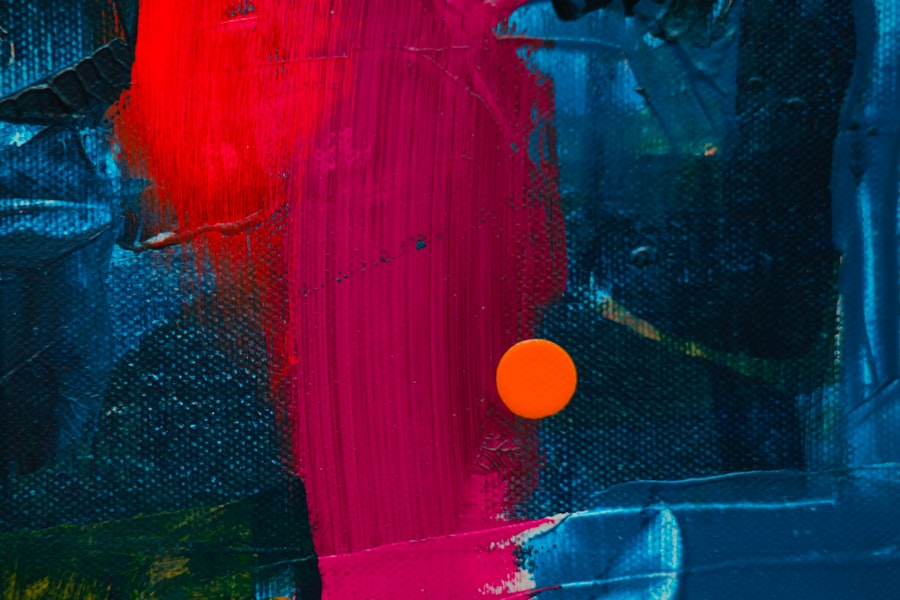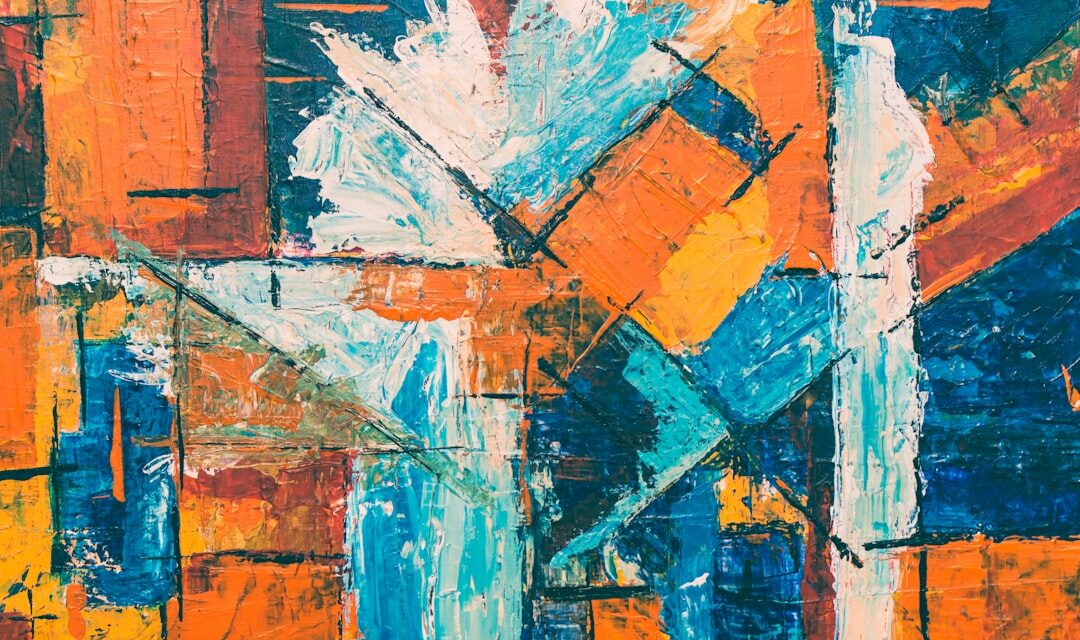Imagination serves as the cornerstone of artistic expression, allowing artists to transcend the boundaries of reality and delve into realms of possibility. It is through the lens of imagination that artists can conjure vivid landscapes, intricate characters, and profound narratives that resonate with the human experience. This faculty not only fuels the creative process but also invites viewers to engage with art on a deeper level, prompting them to explore their own interpretations and emotional responses.
The power of imagination in art lies in its ability to evoke feelings, provoke thoughts, and inspire change, making it an essential element in the creation of meaningful works. Throughout history, artists have harnessed the power of imagination to challenge societal norms and push the limits of conventional thought. From the surrealist dreamscapes of Salvador Dalí to the abstract expressions of Wassily Kandinsky, imagination has been a driving force behind movements that seek to redefine artistic boundaries.
These artists have demonstrated that imagination is not merely a whimsical escape from reality; rather, it is a profound tool for exploring complex themes such as identity, existence, and the human condition. By tapping into their imaginative faculties, artists can create works that resonate across time and culture, inviting audiences to reflect on their own lives and experiences.
Summary
- Imagination is a powerful tool in art, allowing artists to create unique and innovative works that challenge traditional norms and boundaries.
- Creativity and vision are essential in art, enabling artists to explore new ideas, perspectives, and techniques to express themselves.
- Visualisation plays a crucial role in artistic expression, helping artists to conceptualise and plan their artwork before bringing it to life on canvas.
- The future of art is shaped by trends and innovations, with artists constantly pushing the boundaries of traditional art forms and embracing new technologies.
- Techniques for envisioning art, from mind to canvas, vary widely and can include sketching, painting, digital design, and mixed media, among others.
Exploring Creativity and Vision in Art
Creativity is often viewed as an innate talent, yet it is also a skill that can be cultivated and nurtured. In the realm of art, creativity manifests in myriad forms, from the spontaneous brushstrokes of an abstract painter to the meticulous planning of a sculptor. Vision plays a crucial role in this process, as it allows artists to conceptualise their ideas and translate them into tangible forms.
The interplay between creativity and vision is what gives rise to innovative artworks that challenge perceptions and inspire dialogue. The exploration of creativity in art is not limited to the act of creation itself; it also encompasses the environment in which artists work. Factors such as cultural influences, personal experiences, and even societal challenges can shape an artist’s vision and creative output.
For instance, the vibrant colours and dynamic patterns found in African textiles reflect not only aesthetic preferences but also cultural narratives and histories. By examining these influences, we gain insight into how creativity is informed by context, leading to a richer understanding of artistic expression.
The Role of Visualisation in Artistic Expression

Visualisation is a critical component of the artistic process, enabling artists to translate abstract ideas into visual forms. This mental imagery allows creators to experiment with compositions, colours, and textures before committing them to canvas or other mediums. For many artists, visualisation serves as a bridge between thought and execution, facilitating a more cohesive and intentional approach to their work.
It is through this process that artists can refine their concepts and develop a clear vision for their creations. Moreover, visualisation extends beyond the individual artist; it can also influence how audiences perceive and interpret art. When viewers engage with a piece, they often bring their own experiences and emotions into the equation, creating a unique dialogue between the artwork and its audience.
This interaction highlights the importance of visualisation not only as a tool for creation but also as a means of fostering connection and understanding. By inviting viewers to visualise their own interpretations, artists can create a shared space for reflection and dialogue.
Envisioning the Future of Art: Trends and Innovations
As we look towards the future of art, it is evident that trends and innovations are continually reshaping the landscape of artistic expression. The rise of digital technology has opened new avenues for creativity, allowing artists to experiment with virtual reality, augmented reality, and interactive installations. These advancements not only expand the possibilities for artistic creation but also challenge traditional notions of what art can be.
As artists embrace these new tools, they are able to engage audiences in ways that were previously unimaginable. In addition to technological innovations, there is a growing emphasis on sustainability within the art world. Many contemporary artists are exploring eco-friendly materials and practices, reflecting a broader societal shift towards environmental consciousness.
This trend not only addresses pressing global issues but also encourages artists to rethink their relationship with materials and resources. As we envision the future of art, it becomes clear that these trends are not merely passing fads; they represent a fundamental evolution in how art is created, experienced, and understood.
Techniques for Envisioning Art: From Mind to Canvas
The journey from mind to canvas involves a myriad of techniques that artists employ to bring their visions to life. One such technique is sketching, which allows artists to quickly capture ideas and explore different compositions before committing to a final piece. This preliminary stage is crucial for refining concepts and ensuring that the final artwork aligns with the artist’s original vision.
Additionally, many artists utilise colour theory to evoke specific emotions or atmospheres within their work, carefully selecting hues that resonate with their intended message. Another important technique in envisioning art is layering. Whether through paint, collage, or mixed media, layering enables artists to build depth and complexity within their compositions.
This process not only enhances visual interest but also allows for greater exploration of themes and narratives. By incorporating various materials and techniques, artists can create multifaceted works that invite viewers to engage with them on multiple levels. Ultimately, these techniques serve as essential tools for translating imaginative concepts into tangible forms.
Envisioning Art in Different Cultures and Traditions

Artistic expression varies significantly across cultures and traditions, each offering unique perspectives on creativity and vision. In Indigenous cultures, for example, art often serves as a means of storytelling and preserving history. Through intricate patterns and symbols, Indigenous artists convey narratives that reflect their connection to land, community, and spirituality.
This cultural context enriches our understanding of how art functions as a vehicle for communication and identity. Similarly, Eastern philosophies have profoundly influenced artistic practices around the world. The concept of wabi-sabi in Japanese aesthetics celebrates imperfection and transience, encouraging artists to embrace the beauty found in simplicity and natural forms.
This perspective contrasts sharply with Western ideals that often prioritise precision and perfectionism. By examining these diverse cultural approaches to art, we gain insight into how vision is shaped by context and tradition, ultimately enriching the global tapestry of artistic expression.
The Impact of Technology on Envisioning Art
The advent of technology has revolutionised the way artists envision and create their work. Digital tools such as graphic design software and 3D modelling programs have expanded the possibilities for artistic expression, allowing creators to experiment with new forms and techniques. Artists can now manipulate images with unprecedented precision, enabling them to realise their visions in ways that were once limited by traditional mediums.
This shift has not only transformed individual practices but has also influenced broader trends within the art world. Moreover, technology has facilitated new modes of engagement between artists and audiences. Social media platforms provide artists with opportunities to share their work with global audiences instantaneously, fostering connections that transcend geographical boundaries.
Virtual exhibitions allow viewers to experience art from anywhere in the world, democratizing access to artistic expression. As technology continues to evolve, it will undoubtedly play an increasingly significant role in shaping how art is envisioned, created, and experienced.
Envisioning Art as a Tool for Social Change and Activism
Art has long been recognised as a powerful medium for social change and activism. Through their work, artists can challenge societal norms, raise awareness about pressing issues, and inspire action within communities. The act of envisioning art as a tool for activism involves not only creating compelling visuals but also engaging with audiences on an emotional level.
By addressing topics such as inequality, climate change, or human rights through their art, creators can spark conversations that lead to meaningful change. Contemporary movements such as street art exemplify how artists utilise public spaces to convey messages of resistance and hope. Murals painted on city walls serve as powerful reminders of social struggles while simultaneously beautifying urban environments.
These works invite passersby to reflect on their surroundings and consider their role within larger societal narratives. As we envision the future of art in relation to social change, it becomes clear that artistic expression will continue to play a vital role in advocating for justice and inspiring collective action. In conclusion, the power of imagination in art is an enduring force that shapes our understanding of creativity and vision across cultures and traditions.
As we explore the myriad ways in which artists envision their work—from techniques that translate ideas onto canvas to the impact of technology on artistic expression—we recognise that art remains a dynamic medium for communication and connection. Whether through innovative practices or social activism, envisioning art continues to inspire us all to reflect on our shared humanity and envision a better future.
If you are interested in exploring more about the world of art, you may want to read an introduction to the painting The Battle of San Romano by Paolo Uccello. This article delves into the historical context and artistic techniques used in this masterpiece. Additionally, you can also learn about the artist Henri Toulouse-Lautrec in another fascinating article here. Lastly, for a deeper understanding of Pablo Picasso’s work, check out the article on his painting La Vie from 1903-1904. These resources will surely enrich your knowledge and appreciation of art.

